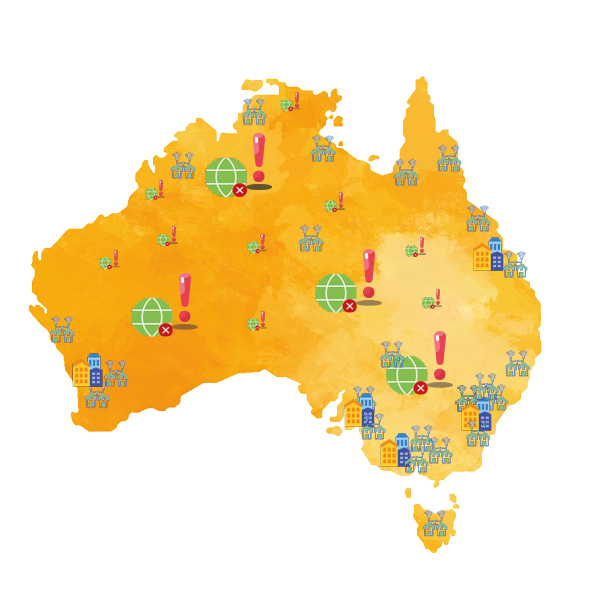We live in the era of high-speed internet that connects us to a vast number of people and gives us virtual access to a number of services, and it can be easy to forget that regional connectivity issues still exist in our wonderful country. As we continue to race through 2023, Australians in remote and regional areas still struggle with persistent connectivity issues and despite impressive technological advancements. In this blog post, we’ll explore why regional connectivity is important, the reason why progress has been so slow, and learn more about what is being done to solve this problem.

Why should we care about regional connectivity?
If Covid taught us anything at all, it’s that we really, really rely on the internet! From shopping online to telehealth appointments to video calling family and friends during lockdowns, the internet made adapting and living through that strange time somewhat more tolerable.
Connectivity is also essential to economic growth and social sustainability. Regional Australia makes a vital contribution to Australia through primary industries and tourism. It provides the bulk of our food and energy through farms and resources (mining and agriculture), and employment for many Australians. Furthermore, Australians spend nearly half of their tourism budget within these regional areas, which is critical to our economy.
Reliable connectivity is crucial if we expect people to live and work in these remote rural areas. It will improve access to medical, professional and government services, allow people to confidently run their businesses (including having EFTPOS options), and improve communication, increasing community safety, particularly during bushfire season.
Progress is so slow…it feels like we’ve been looking at a loading screen!
Unfortunately, despite the need for regional connectivity to improve fast, the rollout hasn’t been fast at all. Here in Australia, the cost of building access technologies over such large landmass to low population density areas makes providing high-quality connectivity a significant challenge.
Some of the challenges for improving connectivity include the significant cost of upgrading existing or broken technologies in rural areas. Many homes are widespread, which means one cable to reach one property is significantly longer than the cables that are run to reach a home in a major city, making it more costly to connect one home. Furthermore, the distance from houses to street cabinets where the cables meet is far greater, meaning data travels longer from telephone exchanges to the user’s home, increasing latency and decreasing data speed.
Current initiatives to improve connectivity
The Government has implemented the Better Connectivity Plan – a key initiative to the Government’s telecommunications agenda providing more than $1.1 billion to rural and regional communities. The Plan includes $656 million over five years to improve mobile and broadband connectivity. Some of the funds available for better broadband are:
- $30 million for on-farm connectivity so farmers can take advantage of connected machinery and sensor technology
- $20 million to conduct independent audits of mobile coverage and better identify black spots to determine areas that should be of priority
- $480 million has been provided to NBN Co through the Fixed Wireless and Satellite Upgrade Program.
The NBN Fixed Wireless and Satellite Upgrade Program will upgrade 120,000 satellite premises to Fixed Wireless and improve the Fixed Wireless network by an estimated 50%. This will enable speeds of up to 100Mbps for all premises in the expanded Fixed Wireless footprint, and up to 250Mbps for 85% of Fixed Wireless premises.
Internet service providers nationally will, therefore, be able to offer much better internet services to rural and remote homes, so keep an eye out for some great plan offerings from Leaptel!
In 2023, regional connectivity remains a significant issue for Aussies living in rural and remote areas. The issue remains ongoing in large part due to the significant investment in technologies that can solve the geographical size issue of this great country, but thanks to the Government’s significant investment, plans such as the Better Connectivity Plan are helping to deliver better connectivity to these areas.

